- Home
- H. P. Lovecraft
Necronomicon: The Best Weird Tales Page 14
Necronomicon: The Best Weird Tales Read online
Page 14
Being now afraid to live alone in the ancient house on the moor, I departed on the following day for London, taking with me the amulet after destroying by fire and burial the rest of the impious collection in the museum. But after three nights I heard the baying again, and before a week was over felt strange eyes upon me whenever it was dark. One evening as I strolled on Victoria Embankment for some needed air, I saw a black shape obscure one of the reflections of the lamps in the water. A wind, stronger than the night-wind, rushed by, and I knew that what had befallen St John must soon befall me.
The next day I carefully wrapped the green jade amulet and sailed for Holland. What mercy I might gain by returning the thing to its silent, sleeping owner I knew not; but I felt that I must try any step conceivably logical. What the hound was, and why it had pursued me, were questions still vague; but I had first heard the baying in that ancient churchyard, and every subsequent event including St John’s dying whisper had served to connect the curse with the stealing of the amulet. Accordingly I sank into the nethermost abysses of despair when, at an inn in Rotterdam, I discovered that thieves had despoiled me of this sole means of salvation.
The baying was loud that evening, and in the morning I read of a nameless deed in the vilest quarter of the city. The rabble were in terror, for upon an evil tenement had fallen a red death beyond the foulest previous crime of the neighbourhood. In a squalid thieves’ den an entire family had been torn to shreds by an unknown thing which left no trace, and those around had heard all night a faint, deep, insistent note as of a gigantic hound.
So at last I stood again in the unwholesome churchyard where a pale winter moon cast hideous shadows, and leafless trees drooped sullenly to meet the withered, frosty grass and cracking slabs, and the ivied church pointed a jeering finger at the unfriendly sky, and the night-wind howled maniacally from over frozen swamps and frigid seas. The baying was very faint now, and it ceased altogether as I approached the ancient grave I had once violated, and frightened away an abnormally large horde of bats which had been hovering curiously around it.
I know not why I went thither unless to pray, or gibber out insane pleas and apologies to the calm white thing that lay within; but, whatever my reason, I attacked the half-frozen sod with a desperation partly mine and partly that of a dominating will outside myself. Excavation was much easier than I expected, though at one point I encountered a queer interruption; when a lean vulture darted down out of the cold sky and pecked frantically at the grave-earth until I killed him with a blow of my spade. Finally I reached the rotting oblong box and removed the damp nitrous cover. This is the last rational act I ever performed.
For crouched within that centuried coffin, embraced by a closepacked nightmare retinue of huge, sinewy, sleeping bats, was the bony thing my friend and I had robbed; not clean and placid as we had seen it then, but covered with caked blood and shreds of alien flesh and hair, and leering sentiently at me with phosphorescent sockets and sharp ensanguined fangs yawning twistedly in mockery of my inevitable doom. And when it gave from those grinning jaws a deep, sardonic bay as of some gigantic hound, and I saw that it held in its gory filthy claw the lost and fateful amulet of green jade, I merely screamed and ran away idiotically, my screams soon dissolving into peals of hysterical laughter.
Madness rides the star-wind . . . claws and teeth sharpened on centuries of corpses . . . dripping death astride a bacchanale of bats from night-black ruins of buried temples of Belial . . . Now, as the baying of that dead fleshless monstrosity grows louder and louder, and the stealthy whirring and flapping of those accursed web-wings circles closer and closer, I shall seek with my revolver the oblivion which is my only refuge from the unnamed and unnameable.
THE RATS IN THE WALLS
ON JULY 16, 1923, I MOVED into Exham Priory after the last workman had finished his labours. The restoration had been a stupendous task, for little had remained of the deserted pile but a shell-like ruin; yet because it had been the seat of my ancestors, I let no expense deter me. The place had not been inhabited since the reign of James the First, when a tragedy of intensely hideous, though largely unexplained, nature had struck down the master, five of his children, and several servants; and driven forth under a cloud of suspicion and terror the third son, my lineal progenitor and the only survivor of the abhorred line.
With this sole heir denounced as a murderer, the estate had reverted to the crown, nor had the accused man made any attempt to exculpate himself or regain his property. Shaken by some horror greater than that of conscience or the law, and expressing only a frantic wish to exclude the ancient edifice from his sight and memory, Walter de la Poer, eleventh Baron Exham, fled to Virginia and there founded the family which by the next century had become known as Delapore.
Exham Priory had remained untenanted, though later allotted to the estates of the Norrys family and much studied because of its peculiarly composite architecture; an architecture involving Gothic towers resting on a Saxon or Romanesque substructure, whose foundation in turn was of a still earlier order or blend of orders - Roman, and even Druidic or native Cymric, if legends speak truly. This foundation was a very singular thing, being merged on one side with the solid limestone of the precipice from whose brink the priory overlooked a desolate valley three miles west of the village of Anchester.
Architects and antiquarians loved to examine this strange relic of forgotten centuries, but the country folk hated it. They had hated it hundreds of years before, when my ancestors lived there, and they hated it now, with the moss and mould of abandonment on it. I had not been a day in Anchester before I knew I came of an accursed house. And this week workmen have blown up Exham Priory, and are busy obliterating the traces of its foundations. The bare statistics of my ancestry I had always known, together with the fact that my first American forebear had come to the colonies under a strange cloud. Of details, however, I had been kept wholly ignorant through the policy of reticence always maintained by the Delapores. Unlike our planter neighbours, we seldom boasted of crusading ancestors or other medieval and Renaissance heroes; nor was any kind of tradition handed down except what may have been recorded in the sealed envelope left before the Civil War by every squire to his eldest son for posthumous opening. The glories we cherished were those achieved since the migration; the glories of a proud and honourable, if somewhat reserved and unsocial Virginia line.
During the war our fortunes were extinguished and our whole existence changed by the burning of Carfax, our home on the banks of the James. My grandfather, advanced in years, had perished in that incendiary outrage, and with him the envelope that had bound us all to the past. I can recall that fire today as I saw it then at the age of seven, with the Federal soldiers shouting, the women screaming, and the negroes howling and praying. My father was in the army, defending Richmond, and after many formalities my mother and I were passed through the lines to join him.
When the war ended we all moved north, whence my mother had come; and I grew to manhood, middle age, and ultimate wealth as a stolid Yankee. Neither my father nor I ever knew what our hereditary envelope had contained, and as I merged into the greyness of Massachusetts business life I lost all interest in the mysteries which evidently lurked far back in my family tree. Had I suspected their nature, how gladly I would have left Exham Priory to its moss, bats, and cobwebs!
My father died in 1904, but without any message to leave to me, or to my only child, Alfred, a motherless boy of ten. It was this boy who reversed the order of family information, for although I could give him only jesting conjectures about the past, he wrote me of some very interesting ancestral legends when the late war took him to England in 1917 as an aviation officer. Apparently the Delapores had a colourful and perhaps sinister history, for a friend of my son’s, Capt. Edward Norrys of the Royal Flying Corps, dwelt near the family seat at Anchester and related some peasant superstitions which few novelists could equal for wildness and incredibility. Norrys himself, of course, did not take them so seriously; but they
amused my son and made good material for his letters to me. It was this legendry which definitely turned my attention to my transatlantic heritage, and made me resolve to purchase and restore the family seat which Norrys showed to Alfred in its picturesque desertion, and offered to get for him at a surprisingly reasonable figure, since his own uncle was the present owner.
I bought Exham Priory in 1918, but was almost immediately distracted from my plans of restoration by the return of my son as a maimed invalid. During the two years that he lived I thought of nothing but his care, having even placed my business under the direction of partners.
In 1921, as I found myself bereaved and aimless, a retired manufacturer no longer young, I resolved to divert my remaining years with my new possession. Visiting Anchester in December, I was entertained by Capt. Norrys, a plump, amiable young man who had thought much of my son, and secured his assistance in gathering plans and anecdotes to guide in the coming restoration. Exham Priory itself I saw without emotion, a jumble of tottering medieval ruins, covered with lichens and honeycombed with rooks’ nests, perched perilously upon a precipice, and denuded of floors or other interior features save the stone walls of the separate towers.
As I gradually recovered the image of the edifice as it had been when my ancestors left it over three centuries before, I began to hire workmen for the reconstruction. In every case I was forced to go outside the immediate locality, for the Anchester villagers had an almost unbelievable fear and hatred of the place. This sentiment was so great that it was sometimes communicated to the outside labourers, causing numerous desertions; whilst its scope appeared to include both the priory and its ancient family.
My son had told me that he was somewhat avoided during his visits because he was a de la Poer, and I now found myself subtly ostracised for a like reason until I convinced the peasants how little I knew of my heritage. Even then they sullenly disliked me, so that I had to collect most of the village traditions through the mediation of Norrys. What the people could not forgive, perhaps, was that I had come to restore a symbol so abhorrent to them; for, rationally or not, they viewed Exham Priory as nothing less than a haunt of fiends and werewolves.
Piecing together the tales which Norrys collected for me, and supplementing them with the accounts of several savants who had studied the ruins, I deduced that Exham Priory stood on the site of a prehistoric temple; a Druidical or ante-Druidical thing which must have been contemporary with Stonehenge. That indescribable rites had been celebrated there, few doubted, and there were unpleasant tales of the transference of these rites into the Cybele worship which the Romans had introduced.
Inscriptions still visible in the sub-cellar bore such unmistakable letters as ‘DIV . . . OPS . . . MAGNA. M AT . . .’ sign of the Magna Mater whose dark worship was once vainly forbidden to Roman citizens. Anchester had been the camp of the third Augustan legion, as many remains attest, and it was said that the temple of Cybele was splendid and thronged with worshippers who performed nameless ceremonies at the bidding of a Phrygian priest. Tales added that the fall of the old religion did not end the orgies at the temple, but that the priests lived on in the new faith without real change. Likewise was it said that the rites did not vanish with the Roman power, and that certain among the Saxons added to what remained of the temple, and gave it the essential outline it subsequent preserved, making it the centre of a cult feared through half the heptarchy. About A.D. 1000 the place is mentioned in a chronicle as being a substantial stone priory housing a strange powerful monastic order and surrounded by extensive gardens which needed no walls to exclude a frightened populace. It was never destroyed by the Danes, though after the Norman Conquest it must have declined tremendously, since there was no impediment when Henry the Third granted the site to my ancestor, Gilbert de la Poer, First Baron Exham, in 1261.
Of my family before this date there is no evil report, but something strange must have happened then. In one chronicle there is a reference to a de la Poer as ‘cursed of God’ in 1307, whilst village legendry had nothing but evil and frantic fear to tell of the castle that went up on the foundations of the old temple and priory. The fireside tales were of the most grisly description, all the ghastlier because of their frightened reticence and cloudy evasiveness. They represented my ancestors as a race of hereditary daemons beside whom Gilles de Retz and the Marquis de Sade would seem the veriest tyros, and hinted whisperingly at their responsibility for the occasional disappearances of villagers through several generations.
The worst characters, apparently, were the barons and their direct heirs; at least, most was whispered about these. If of healthier inclinations, it was said, an heir would early and mysteriously die to make way for another more typical scion. There seemed to be an inner cult in the family, presided over by the head of the house, and sometimes closed except to a few members. Temperament rather than ancestry was evidently the basis of this cult, for it was entered by several who married into the family. Lady Margaret Trevor from Cornwall, wife of Godfrey, the second son of the fifth baron, became a favourite bane of children all over the countryside, and the daemon heroine of a particularly horrible old ballad not yet extinct near the Welsh border. Preserved in balladry, too, though not illustrating the same point, is the hideous tale of Lady Mary de la Poer, who shortly after her marriage to the Earl of Shrewsfield was killed by him and his mother, both of the slayers being absolved and blessed by the priest to whom they confessed what they dared not repeat to the world.
These myths and ballads, typical as they were of crude superstition, repelled me greatly. Their persistence, and their application to so long a line of my ancestors, were especially annoying; whilst the imputations of monstrous habits proved unpleasantly reminiscent of the one known scandal of my immediate forebears - the case of my cousin, young Randolph Delapore of Carfax, who went among the negroes and became a voodoo priest after he returned from the Mexican War.
I was much less disturbed by the vaguer tales of wails and howlings in the barren, windswept valley beneath the limestone cliff; of the graveyard stenches after the spring rains; of the floundering, squealing white thing on which Sir John Clave’s horse had trod one night in a lonely field; and of the servant who had gone mad at what he saw in the priory in the full light of day. These things were hackneyed spectral lore, and I was at that time a pronounced sceptic. The accounts of vanished peasants were less to be dismissed, though not especially significant in view of medieval custom. Prying curiosity meant death, and more than one severed head had been publicly shown on the bastions - now effaced - around Exham Priory.
A few of the tales were exceedingly picturesque, and made me wish I had learnt more of the comparative mythology in my youth. There was, for instance, the belief that a legion of batwinged devils kept witches’ sabbath each night at the priory - a legion whose sustenance might explain the disproportionate abundance of coarse vegetables harvested in the vast gardens. And, most vivid of all, there was the dramatic epic of the rats - the scampering army of obscene vermin which had burst forth from the castle three months after the tragedy that doomed it to desertion - the lean, filthy, ravenous army which had swept all before it and devoured fowl, cats, dogs, hogs, sheep, and even two hapless human beings before its fury was spent. Around that unforgettable rodent army a whole separate cycle of myths revolves, for it scattered among the village homes and brought curses and horrors in its train.
Such was the lore that assailed me as I pushed to completion, with an elderly obstinacy, the work of restoring my ancestral home. It must not be imagined for a moment that these tales formed my principal psychological environment. On the other hand, I was constantly praised and encouraged by Capt. Norrys and the antiquarians who surrounded and aided me. When the task was done, over two years after its commencement, I viewed the great rooms, wainscoted walls, vaulted ceilings, mullioned windows, and broad staircases with a pride which fully compensated for the prodigious expense of the restoration.
Every attribute of the
Middle Ages was cunningly reproduced, and the new parts blended perfectly with the original walls and foundations. The seat of my fathers was complete, and I looked forward to redeeming at last the local fame of the line which ended in me. I would reside here permanently, and prove that a de la Poer (for I had adopted again the original spelling of the name) need not be a fiend. My comfort was perhaps augmented by the fact that, although Exham Priory was medievally fitted, its interior was in truth wholly new and free from old vermin and old ghosts alike.
As I have said, I moved in on July 16, 1923. My household consisted of seven servants and nine cats, of which latter species I am particularly fond. My eldest cat, ‘Nigger-Man’, was seven years old and had come with me from my home in Bolton, Massachusetts; the others I had accumulated whilst living with Capt. Norrys’ family during the restoration of the priory.
For five days our routine proceeded with the utmost placidity, my time being spent mostly in the codification of old family data. I had now obtained some very circumstantial accounts of the final tragedy and flight of Walter de la Poer, which I conceived to be the probable contents of the hereditary paper lost in the fire at Carfax. It appeared that my ancestor was accused with much reason of having killed all the other members of his household, except four servant confederates, in their sleep, about two weeks after a shocking discovery which changed his whole demeanour, but which, except by implication, he disclosed to no one save perhaps the servants who assisted him and afterwards fled beyond reach.

 The Best of H.P. Lovecraft
The Best of H.P. Lovecraft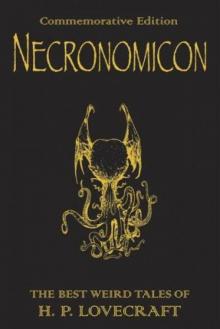 The Definitive H.P. Lovecraft: 67 Tales Of Horror In One Volume
The Definitive H.P. Lovecraft: 67 Tales Of Horror In One Volume The Complete Works of H.P. Lovecraft
The Complete Works of H.P. Lovecraft Other Gods and More Unearthly Tales
Other Gods and More Unearthly Tales Lovecraft's Fiction Volume I, 1905-1925
Lovecraft's Fiction Volume I, 1905-1925 The Shadow Out of Time
The Shadow Out of Time The Shunned House
The Shunned House Lovecraft's Fiction Volume II, 1926-1928
Lovecraft's Fiction Volume II, 1926-1928 The Thing on the Doorstep and Other Weird Stories
The Thing on the Doorstep and Other Weird Stories Dream Cycle of H. P. Lovecraft: Dreams of Terror and Death
Dream Cycle of H. P. Lovecraft: Dreams of Terror and Death Great Tales of Horror
Great Tales of Horror Shadows of Death
Shadows of Death Delphi Complete Works of H. P. Lovecraft (Illustrated)
Delphi Complete Works of H. P. Lovecraft (Illustrated) Waking Up Screaming: Haunting Tales of Terror
Waking Up Screaming: Haunting Tales of Terror H.P. Lovecraft Goes to the Movies
H.P. Lovecraft Goes to the Movies The Road to Madness
The Road to Madness The Complete H.P. Lovecraft Reader (68 Stories)
The Complete H.P. Lovecraft Reader (68 Stories) The Horror in the Museum
The Horror in the Museum Collected Fiction Volume 1 (1905-1925): A Variorum Edition
Collected Fiction Volume 1 (1905-1925): A Variorum Edition Lovecrafts_Fiction, vol.I_1905-1925
Lovecrafts_Fiction, vol.I_1905-1925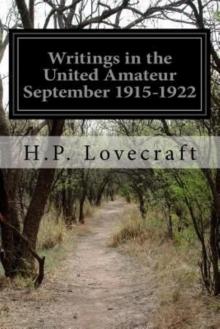 Writings in the United Amateur, 1915-1922
Writings in the United Amateur, 1915-1922 H.P. Lovecraft: The Complete Works
H.P. Lovecraft: The Complete Works Collected Fiction Volume 3 (1931-1936): A Variorum Edition
Collected Fiction Volume 3 (1931-1936): A Variorum Edition H.P. Lovecraft: The Complete Fiction
H.P. Lovecraft: The Complete Fiction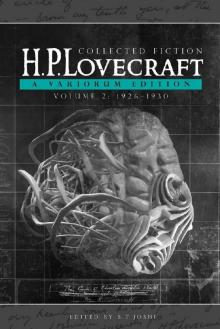 Collected Fiction Volume 2 (1926-1930): A Variorum Edition
Collected Fiction Volume 2 (1926-1930): A Variorum Edition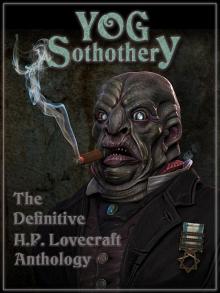 Yog Sothothery - The Definitive H.P. Lovecraft Anthology
Yog Sothothery - The Definitive H.P. Lovecraft Anthology The Complete H.P. Lovecraft Collection (Xist Classics)
The Complete H.P. Lovecraft Collection (Xist Classics)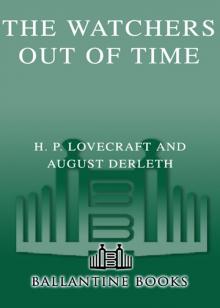 The Watchers Out of Time
The Watchers Out of Time Eldritch Tales
Eldritch Tales The Other Gods And More Unearthly Tales
The Other Gods And More Unearthly Tales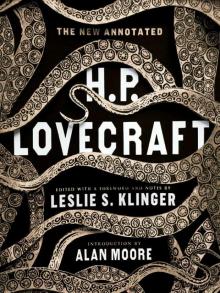 The New Annotated H. P. Lovecraft
The New Annotated H. P. Lovecraft At the mountains of madness
At the mountains of madness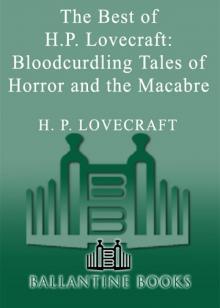 Bloodcurdling Tales of Horror and the Macabre
Bloodcurdling Tales of Horror and the Macabre Fossil Lake II: The Refossiling
Fossil Lake II: The Refossiling Shadows of Carcosa: Tales of Cosmic Horror by Lovecraft, Chambers, Machen, Poe, and Other Masters of the Weird
Shadows of Carcosa: Tales of Cosmic Horror by Lovecraft, Chambers, Machen, Poe, and Other Masters of the Weird H. P. Lovecraft
H. P. Lovecraft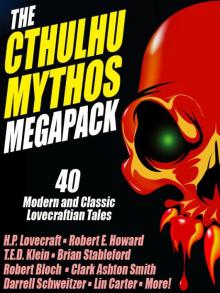 The Cthulhu Mythos Megapack
The Cthulhu Mythos Megapack The Complete H. P. Lovecraft Reader (2nd Edition)
The Complete H. P. Lovecraft Reader (2nd Edition) The Complete Fiction
The Complete Fiction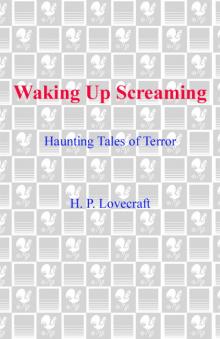 Waking Up Screaming
Waking Up Screaming Transition of H. P. Lovecraft
Transition of H. P. Lovecraft![[1935] The Shadow Out of Time Read online](http://i1.bookreadfree.com/i2/04/12/1935_the_shadow_out_of_time_preview.jpg) [1935] The Shadow Out of Time
[1935] The Shadow Out of Time The Horror Megapack
The Horror Megapack